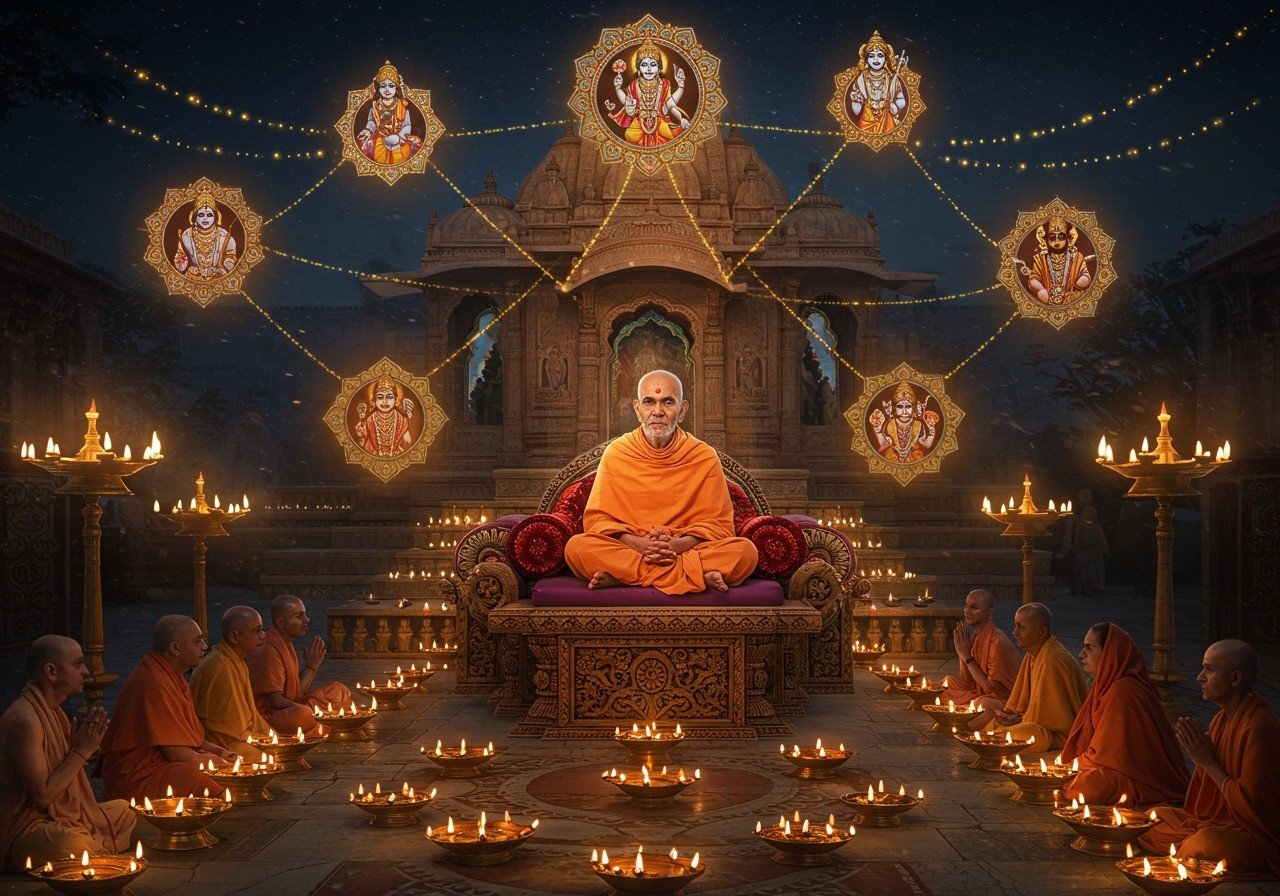
The Ramanandi Sampradaya, a revered branch of Hinduism, beckons us to explore its rich tapestry of devotion, equality, and spiritual awakening. Centered around the worship of Rama, Sita, Hanuman, and Vishnu, this tradition offers a path to divine connection for all.
Understanding the Essence of Ramanandi Sampradaya
This sect, also known as the Ramavats or Ramayats, stands as a beacon of egalitarianism within the Vaishnava tradition. It emphasizes devotion to Vishnu and his incarnations, particularly Rama. The core belief revolves around Rama and Sita as the Supreme Absolute, inseparable and eternally divine.
The Ramanandi Sampradaya’s commitment to inclusivity shines brightly. It transcends social barriers, welcoming individuals from all walks of life. Ramananda, the 14th-century saint who founded the movement, championed this egalitarian spirit, embracing disciples from all castes.
You can delve deeper into the spiritual meaning of water in Hindu traditions by exploring our blog post on Water’s Sacred Power: Rivers, Temples, and Spiritual Meaning. It offers valuable insights into the significance of water in various rituals and practices.
Key Beliefs and Practices
- Rama as Supreme: Devotees hold Rama as their principal deity, alongside Sita, Lakshmana, and Hanuman. Their worship revolves around these central figures, seeking their blessings and guidance.
- Vishishtadvaita Philosophy: The philosophical underpinning of the Ramanandi Sampradaya is Vishishtadvaita. This tradition views Narayana, individual souls (jiva), and the universe as distinct yet interconnected realities, forming a unified whole. They believe in the reality of both the individual soul and the Supreme Being.
- “Ram Tarak Mantra”: Upon initiation, disciples receive the sacred “Ram Tarak Mantra” from their guru. This mantra serves as a powerful tool for connecting with the divine and deepening their spiritual practice.
- Urdhva Pundra Tilak: Followers apply the Urdhva Pundra, an upward-pointing tilak, on their foreheads. This distinctive mark symbolizes their devotion and aspiration towards spiritual elevation.
- Devotional Practices: Devotional songs (bhajans) and complete immersion in worship are central to their way of life. Music and song serve as powerful mediums for expressing love and reverence for the divine.
- Renunciation: Many saints within the tradition embrace a life of renunciation (paramhansa). They dedicate themselves to spiritual pursuits, seeking liberation from worldly attachments.
- Liberation: The Ramanandis believe that liberation is ultimately granted by Vishnu or Rama. Through devotion and adherence to their teachings, they strive to attain this ultimate spiritual goal.
Historical Context and Evolution
Ramananda, a 14th-century Vaishnava saint, is credited with founding this influential movement. The Sampradaya’s origins are steeped in legend, tracing back to Rama initiating Sita with a six-letter mantra, which she subsequently passed on to Hanuman. Over time, the Ramanandi Sampradaya transformed from a loosely connected group of followers into a structured monastic order.
The movement played a significant role in social reform. Ramananda emphasized accessible spiritual knowledge, rejecting caste-based discrimination. He preached in vernacular languages, making religious teachings accessible to the common people and fostering a sense of unity among diverse communities.
Sacred Texts and Traditions
- Key Texts: The Ramanandi Sampradaya draws wisdom from revered scriptures like the Valmiki Ramayana, Adhyatma Ramayana, Ramcharitmanas, Vedas, and Bhaktamal. These texts provide guidance and inspiration for their spiritual practices.
- Bhaktamal: This hagiographic work, written by Raghavadas in 1660, holds special significance. It includes Ramanuja and Ramananda as revered saints of the Ramanuja Sampradaya, celebrating their contributions to the tradition.
Discover the rich tapestry of festivals celebrated in Odisha with our enlightening blog post Odisha Festivals: Devotion, Culture, and Tradition. This exploration will enrich your understanding of Indian cultural heritage.
Poojn.in: Your Resource for Devotional Needs
Poojn.in, India’s leading online store for cultural goods and services, offers a wide range of products to support your devotion to Lord Rama. Explore our collection of pure brass Ram Darbar murtis, traditional Ram Parivar frames, Tulsi malas, sacred texts like the Ramcharitmanas, puja sets, Ram Naam angavastras, and Ram Raksha yantra and kavach. We provide quality assurance, secure packaging, and pan-India delivery.
Browse our selection of premium red shalu cloths, ideal for puja ceremonies and rituals, and experience the quality and convenience of shopping at Poojn.in.
Organization and Global Presence
The Ramanandi Sampradaya is known for its large and influential ascetic wing, possibly the largest monastic order in India. Within this wing, two main subgroups stand out: the Tyagi, who use ash for initiation, and the Naga, historically known for their militant role.
While primarily found in the Ganges Plain of India and Nepal, the Ramanandi Sampradaya has a global presence. Significant communities thrive in countries like Trinidad and Tobago, Guyana, Suriname, Fiji, Mauritius, South Africa, the UK, the US, Canada, Australia, and New Zealand, spreading the message of devotion and equality worldwide.
Learn more about celebrating the epic Ramayana with our insightful blog posts: Ramayana Festivals: Celebrate Ancient Traditions and Symbolism and Teachings in the Epic Ramayana Explained. These resources provide deeper understanding of the Ramayana’s cultural and spiritual significance.
Embracing Tradition in the Modern World
The Ramanandi Sampradaya’s teachings continue to resonate in today’s world. Online platforms like Poojn.in make it easier than ever to connect with this rich heritage, providing access to authentic ritual items and sacred texts. This blend of tradition and technology empowers individuals to embrace their faith and deepen their spiritual practice.


